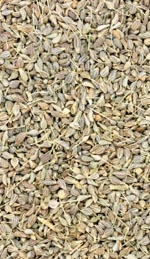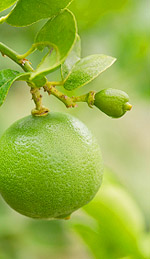 Admirers of the patchouli bush say it is the most distinct herb in the botanical kingdom in terms of fragrance and aroma. One whiff of patchouli oil is forever embedded in the olfactory memory. The bush has an impressive list of long-distance relatives that include rosemary, lavender, and other aromatic plants that grow in the temperate regions. Patchouli likes the steamy jungles, while its cousins prefer the Northern Mediterranean.
Admirers of the patchouli bush say it is the most distinct herb in the botanical kingdom in terms of fragrance and aroma. One whiff of patchouli oil is forever embedded in the olfactory memory. The bush has an impressive list of long-distance relatives that include rosemary, lavender, and other aromatic plants that grow in the temperate regions. Patchouli likes the steamy jungles, while its cousins prefer the Northern Mediterranean.
Botanists in the Philippines were the first group to write about patchouli. That was in 1845, but the oil had been used for centuries. The bush flowers, but it does so reluctantly. The hairy stems distinguish it from Java patchouli, which has smooth stems and flowers.
The oil from Java patchouli has an inferior aroma, but it does show up as an essential oil, so it is important to recognize the difference, especially when the oil is being used to treat thyroid issues or to regenerate damaged cells. Herbs labeled Pogostemon cablin may actually be Pogostemon heyneanus, which is not as potent.
Asian cultures have been using patchouli oil as a moth repellent for centuries. The Europeans followed suit in the 19th century. The aroma of the oil gave oriental goods a mark of distinction back in those days, and the perfume industry started using it in the mid-1800s. Sneaky London merchants started to use the herb to scent domestic goods so they smelled like expensive imported merchandise.
Adulteration is less common with patchouli oil; it’s easy to cultivate and the yield is better than with many other essential oils. There is a temptation to dilute, and a strong cedarwood smell or a spicy clove scent may indicate that the oil has been tampered with, especially when demand outweighs the supply.
An aromatherapy oil blend of patchouli, jasmine, ylang-ylang, sandalwood, rose, and vetiver can inspire clarity and a harmonious flow of energy that interacts with thyroid glands and balances hormone secretion. When patchouli oil is combined with clary sage, rose, lavender, neroli, and geranium the regenerative properties of the oil are triggered. Wounds heal faster, the immune system is reinforced, and damaged cells in the organs are brought back to normal or new cell growth occurs.
The intriguing properties of this thick, sticky, viscous and slow-to-volatize oil get better with age, so aromatherapy treatment can take place years after the oil is distilled. The benefits in terms of thyroid stimulation and skin regeneration will be as good as or better than they were when the oil was first prepared.

 The Egyptians were big fans of
The Egyptians were big fans of Hops is a household word in beer-drinking communities around the world. Beer commercials tout the benefits of aged hops, and the flavor that results from harvesting only the best female plants for brewing. Most of those commercials don’t dive into the male-female aspect of hops plants, but the truth is hops used in beer brewing and as oil is only harvested from female plants.
Hops is a household word in beer-drinking communities around the world. Beer commercials tout the benefits of aged hops, and the flavor that results from harvesting only the best female plants for brewing. Most of those commercials don’t dive into the male-female aspect of hops plants, but the truth is hops used in beer brewing and as oil is only harvested from female plants. The 15th-century alchemist and physician Paracelsus called melissa “The Elixir of Life”, and it was commonly used by both the Greeks and the Romans. The Arabs used it as a special remedy because it had the ability to revive the spirit as well as the body. The ancients were well aware that wellness is rooted in both the mind and the body, something modern-day pharmaceutical remedies often overlook.
The 15th-century alchemist and physician Paracelsus called melissa “The Elixir of Life”, and it was commonly used by both the Greeks and the Romans. The Arabs used it as a special remedy because it had the ability to revive the spirit as well as the body. The ancients were well aware that wellness is rooted in both the mind and the body, something modern-day pharmaceutical remedies often overlook. Grapefruit is a youngster in the fruit world. There’s no mention of grapefruit in Roman or Greek texts, and the Chinese make no reference to the fruit either. It’s still a mystery how, when, and why a
Grapefruit is a youngster in the fruit world. There’s no mention of grapefruit in Roman or Greek texts, and the Chinese make no reference to the fruit either. It’s still a mystery how, when, and why a  The anise seed has been an important part of the Mediterranean diet for centuries. The Egyptians and the Greeks used anise as a spice and as a medicine long before the Spanish, and the Chinese were aware of the antiseptic, antispasmodic, digestive, diuretic, and stimulating qualities of
The anise seed has been an important part of the Mediterranean diet for centuries. The Egyptians and the Greeks used anise as a spice and as a medicine long before the Spanish, and the Chinese were aware of the antiseptic, antispasmodic, digestive, diuretic, and stimulating qualities of  Ayurvedic medicine is a very ancient form of Indian healing which is truly impressive in its complexity and scope. Western medicine has taken a large portion of the knowledge found in this Indian wisdom, and applied it to the development of medicines and techniques that can relieve illnesses that destroy quality of life for millions of people around the world. For example, new Western studies show that sandalwood oil, especially the chemical compound a-santalol, has a dramatic impact on systolic blood pressure, skin conductance, and pulse rate.
Ayurvedic medicine is a very ancient form of Indian healing which is truly impressive in its complexity and scope. Western medicine has taken a large portion of the knowledge found in this Indian wisdom, and applied it to the development of medicines and techniques that can relieve illnesses that destroy quality of life for millions of people around the world. For example, new Western studies show that sandalwood oil, especially the chemical compound a-santalol, has a dramatic impact on systolic blood pressure, skin conductance, and pulse rate. Limes are native to Asia, but many warm countries around the world grow limes in modern times. For example, Italy has been harvesting limes for hundreds of years, and the lime tree is even a part of Greek myth! Lime trees usually grow next to oak trees, so when the Greek gods transformed Philemon into an oak tree and Baucis into a lime tree (tilia tree) so they could live side-by-side for eternity, the lime was immortalized in Greek mythology.
Limes are native to Asia, but many warm countries around the world grow limes in modern times. For example, Italy has been harvesting limes for hundreds of years, and the lime tree is even a part of Greek myth! Lime trees usually grow next to oak trees, so when the Greek gods transformed Philemon into an oak tree and Baucis into a lime tree (tilia tree) so they could live side-by-side for eternity, the lime was immortalized in Greek mythology. The Greeks fell in love with
The Greeks fell in love with  The Egyptians fell in love with the spikenard plant thousands of years ago. The oil from the plant was used to anoint powerful individuals because of its reputation as a powerful healer. The oil was also known for its spiritual properties, as well as for its ability to relax the mind and allow for a higher level of awareness.
The Egyptians fell in love with the spikenard plant thousands of years ago. The oil from the plant was used to anoint powerful individuals because of its reputation as a powerful healer. The oil was also known for its spiritual properties, as well as for its ability to relax the mind and allow for a higher level of awareness.